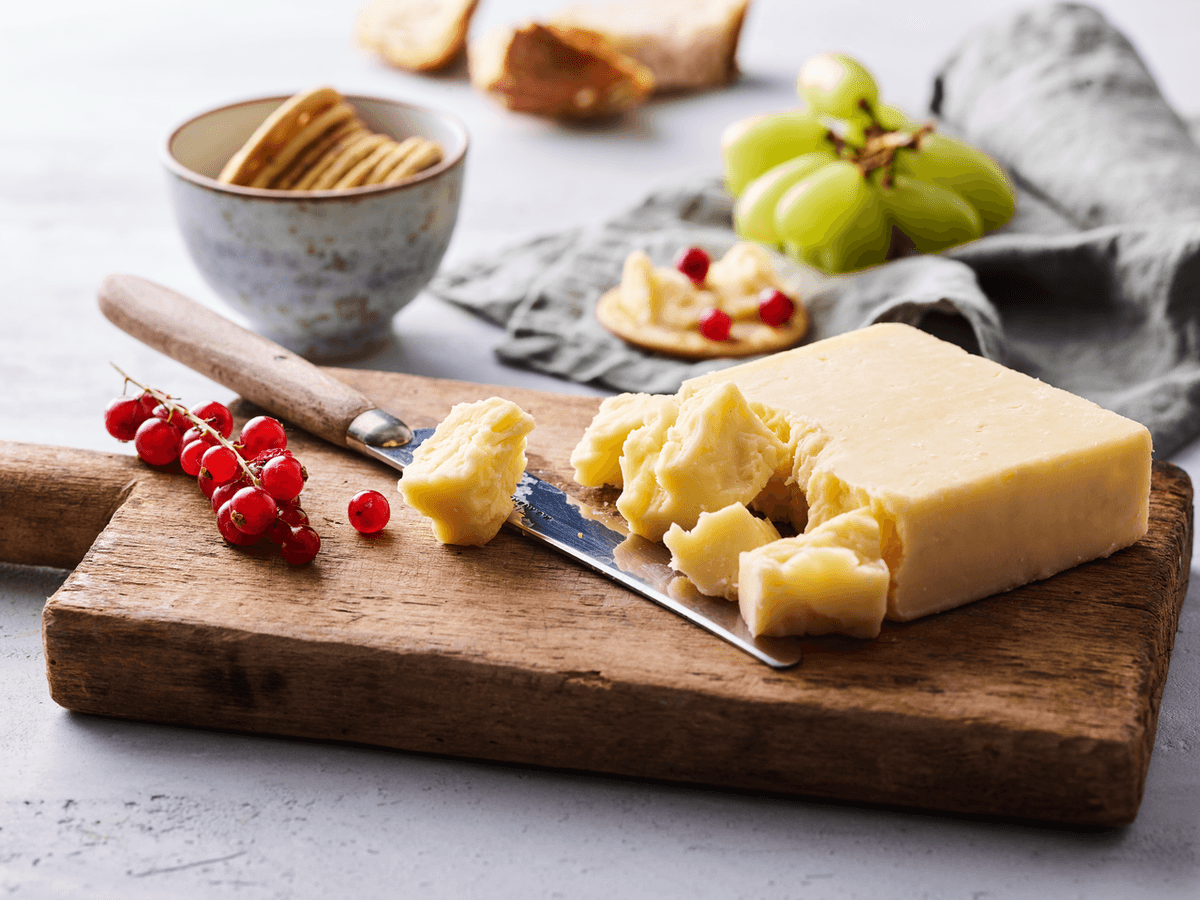This article won 2nd place in our recent Readers' Choice Contest! Congratulations to the author and thanks to everyone who took the time to read the stories and vote.

It is hard to ignore microbes as they are everywhere. They are an integral part of many fermented foods savored around the world including cheese, which contains various microbial communities.
The cheese making process uses a cocktail of bacteria called a starter culture. The microbes within this culture initiate and control fermentation, which is key to ensuring consistent cheese properties.1 Starter cultures can be either defined, containing bacterial strains with known characteristics, or undefined, containing partially known or unknown bacterial strains.1 Most commercial cheddar starter cultures contain bacterial strains spanning three major taxa: mesophilic strains of Lactococcus, including L. lactis and L. cremoris, and thermophilic strains of Streptococcus thermophilus. However, scientists do not know how these bacterial communities interact with one another and how these interactions influence cheese flavor. Ahmad Zeidan, director of research and development at Novonesis and his team set out to answer these questions and published their findings in Nature Communications.3
“A typical cheddar starter culture contains a tractable number of microbial strains, neither too many nor too few, making it a suitable case study for investigating microbial interactions,” Chrats Melkonian, a postdoctoral researcher at Utrecht University and the study’s first author wrote via email. The researchers carefully monitored bacterial growth and metabolite profiles over a year-long cheddar cheese making process. They systematically excluded specific bacterial strains one by one from the starter culture and observed the effect on the growth profiles of the other bacteria. Zeidan and his team found that removing S. thermophilus led to a significant decline in the Lactococcus populations, perhaps because S. thermophilus provides nitrogen sources to Lactococcus, thus contributing to its growth.
Next, the researchers analyzed changes in the proportions of various volatile organic compounds that need to be present in the right amounts to impart cheddar’s characteristic flavor. Flavor compounds are derived from the metabolic reactions occurring during cheese production.2 Using metabolomics, the researchers found that removal of L. cremoris had the greatest effect, leading to either an increase in concentration or production of six flavor compounds. Of these, diacetyl and acetoin, derivatives of citrate metabolism, contribute to the buttery aroma of cheese when produced in small quantities. However, an increase in their levels can lead to off-flavors.
Removal of L. cremoris led to altered gene expression profiles related to diacetyl and acetoin metabolism, with an increased expression of genes for proteins that mediate citrate uptake. These proteins are present in Lactococcus strains, indicating that L. lactis might take up citrate, leading to increased production of diacetyl and acetoin. The authors further speculate that in the unmodified starter culture, L. cremoris may degrade diacetyl or compete with other strains to convert citrate to other compounds, leaving little for conversion to diacetyl and acetoin.
A typical cheddar starter culture contains a tractable number of microbial strains, neither too many nor too few, making it a suitable case study for investigating microbial interactions.
- Chrats Melkonian, Utrecht University
These subtle interactions between the bacterial communities are essential for cheddar cheese’s flavor. “This study is an extra puzzle piece that adds to our understanding about controlling the consortia of bacteria better,” said Herwig Bachmann, a food scientist and systems biologist at Vrije Universiteit Amsterdam who was not involved in this study.
Understanding the interactions among the various microbes could be key to developing the perfect bacterial blend to achieve desirable cheddar properties. Moreover, this study could be expanded to other cheeses and fermented foods, as the strains used in the cheddar making process are widely used in the fermentation industry. “I like cheddar cheese even more after our research,” Melkonian wrote.
- Høier E, et al. The Production, Application and Action of Lactic Cheese Starter Cultures. In Technology of Cheesemaking. 2010;166-192.
- McSweeney PLH, Sousa MJ. Biochemical pathways for the production of flavour compounds in cheeses during ripening: A review. Le Lait. 2000;80(3):293-324.
- Melkonian C, et al. Microbial interactions shape cheese flavour formation. Nat Commun. 2023;14(1):8348.


